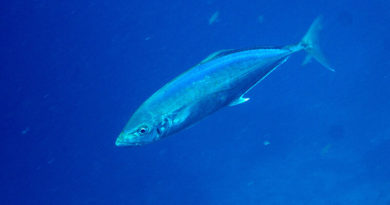Titan: One Year On, What To Learn
A year ago a submersible imploded, on its way to the wreck of the Titanic in the north Atlantic. On board were the CEO of the company and four paying customers who wanted to see the Titanic. All died. I have no interest in the sensationalist aspects of the event; and I feel genuinely sorry for everyone who died in it. There are, however, lessons from it for other high-risk activities, such as scuba diving.
- Procedures, safety protocols, rules & limits all exist for good reasons. These are the accumulated wisdom from decades of experiences from many thousands of smart, skilled people in the craft (submersible construction, or diving). Even slightly modifying them is generally not a good idea. Straightforwardly ignoring them, if you are just starting out, is a very bad idea. Don’t cook up your own procedures in submersible construction, skydiving, scuba diving ect. It’s ok to play chess by altered rules – no one will die. Submersibles, deep scuba diving, mountain climbing: different story. You want to add something minor to the procedures? Probably maybe ok after 20 years of experience. Not ok after 1 year of engaging in a dangerous activity. Totally ignoring the established procedures? Almost certainly not okay, after any time.
- Money, charisma, calling yourself the “next Steve Jobs”, time on TeeVee, lots of online followers, impressive job titles, academic credentials: all of that doesn’t negate the point above. The fish often stinks from the head. It still stinks. Trust your nose.
- If you find yourself in an environment where folks bend rules in dangerous endeavors, ideally speak out. A leading manager did so in regards to the Titan, and was sued by them. That – not being able to speak out – should have been a red flag for everyone, from the other employees to the clients/submersible passengers. If you don’t want to speak out, which can be psychologically hard, then just quit. It’s still better then getting hurt yourself or being part of an operation which risks peoples’ lives.
- A new way of doing things sounds too good to be true? Probably not true. Carbon fiber, in this case, was not a good material to make a deep sea submersible from. At the time there were multiple engineering publications which explained why.
These are good documentaries about different aspects of the disaster: This first one, below, outlines the rule bending, lack of following established protocols, and thinking that “we are special” and need not listen to the experts. In essence, it explains the corporate culture which led to the catastrophe, quite predictably:
Excellent explanation of the engineering aspects, especially of composite materials:
This video provides an excellent explanation about the nature of the lethal injuries sustained by the people in the Titan:
And, to finish on a lighter note: please be kind to submersibles, manned and unmanned ones:
Best Fishes,
Klaus
